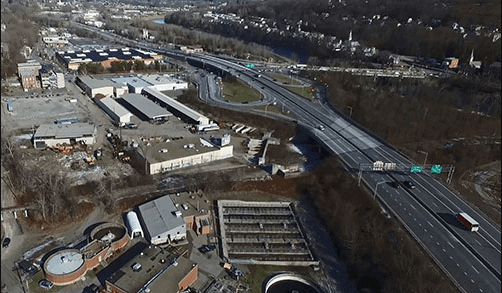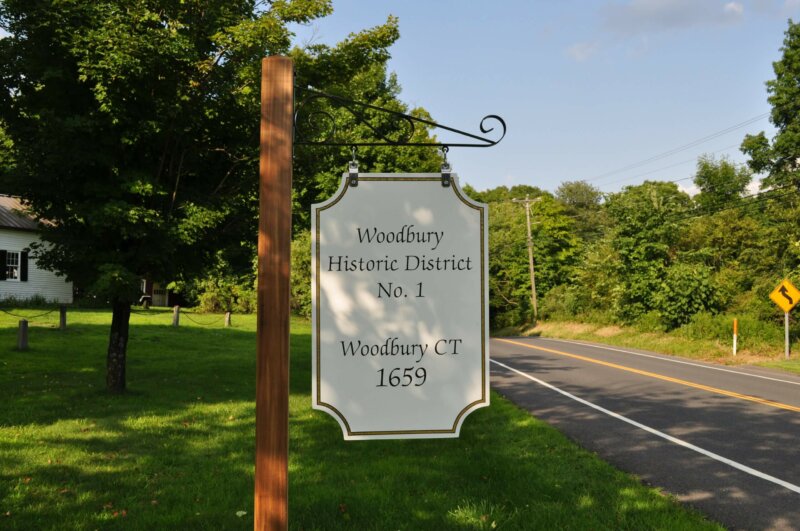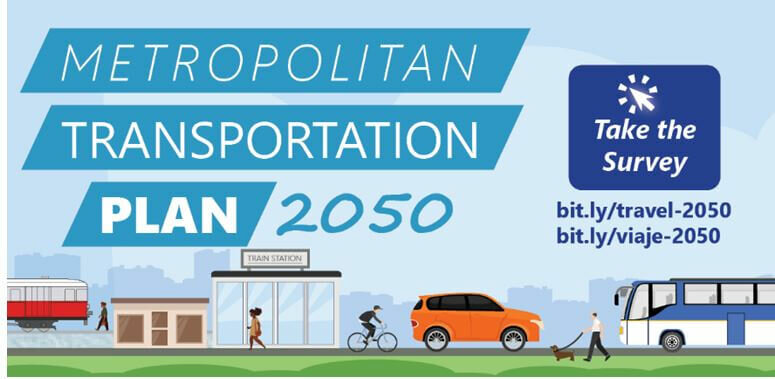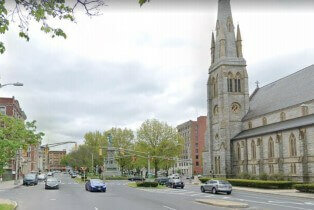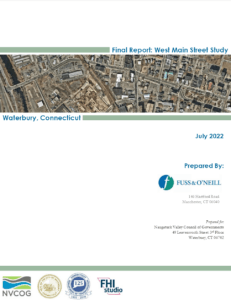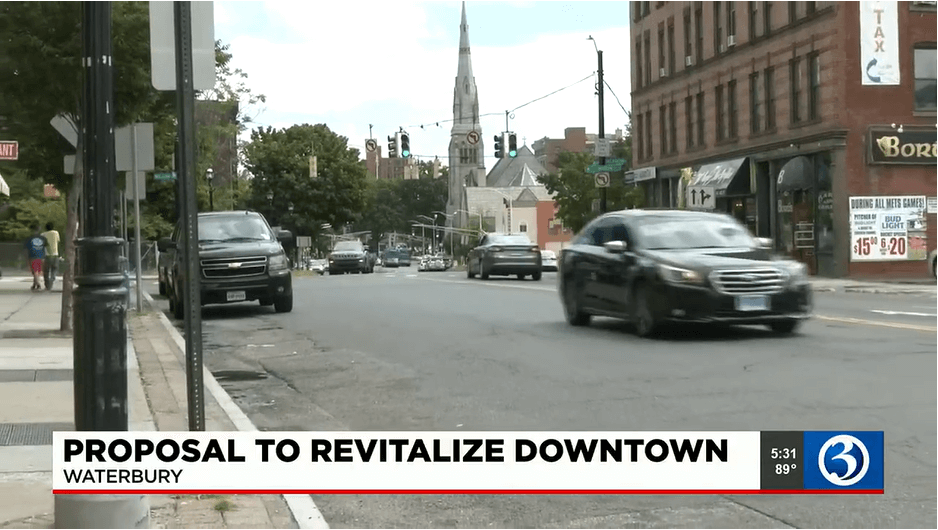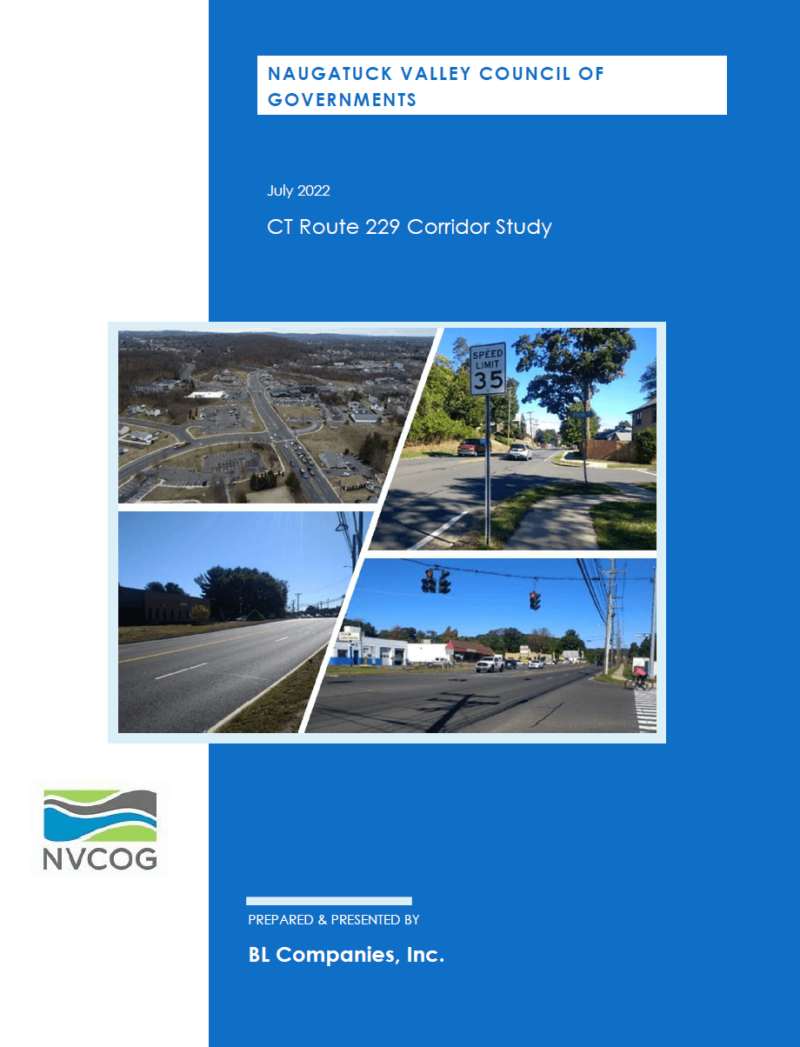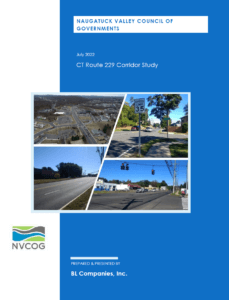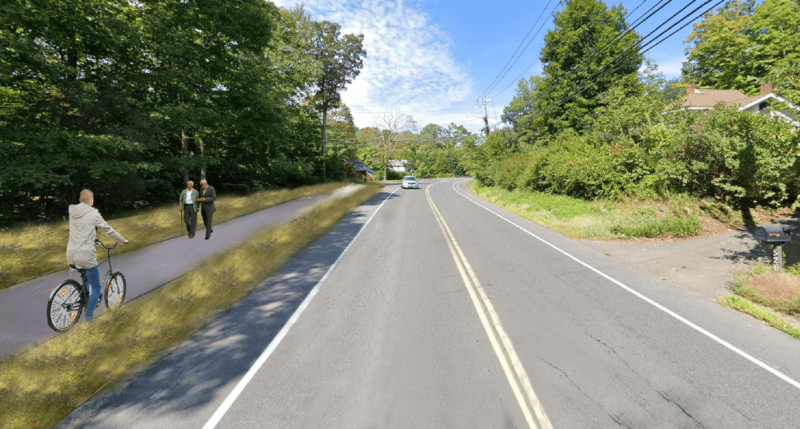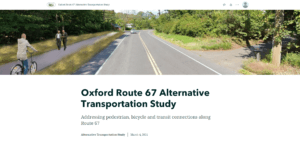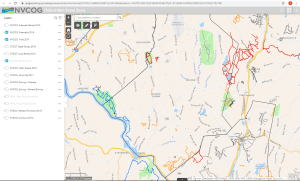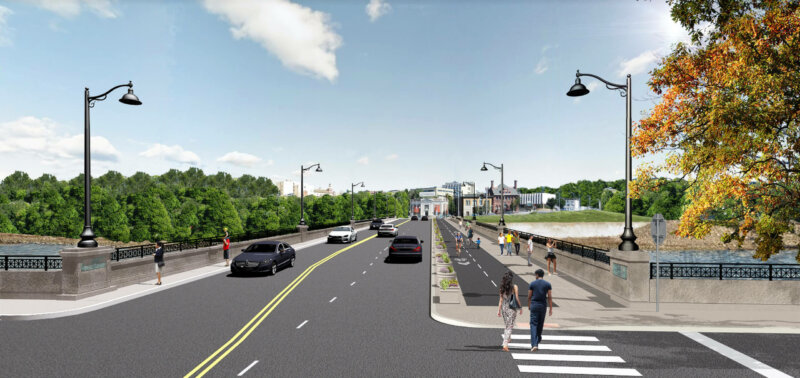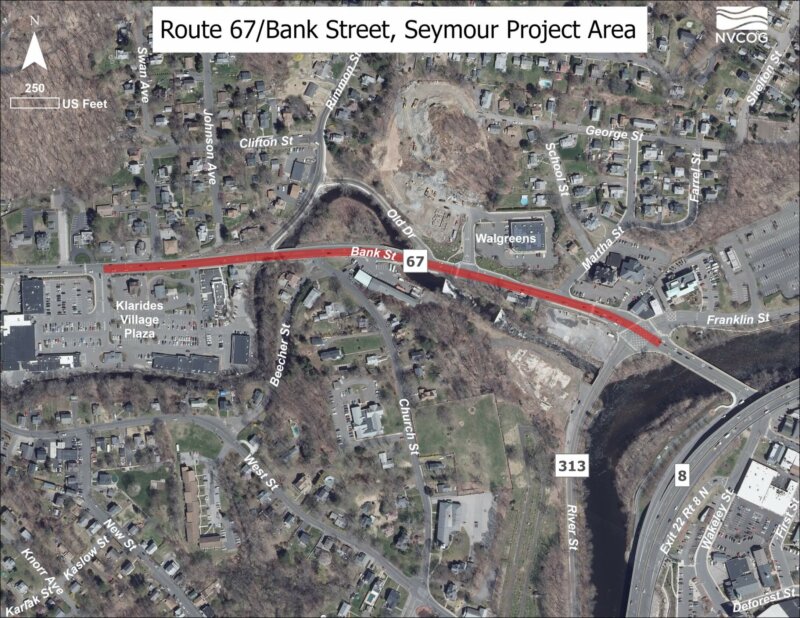The Route 8 Design Build project will bring the section of roadway from Exit 13 in Shelton to Exit 22 in Seymour up to modern highway standards and make it safer for motorists. The work is expected to start in the summer of 2023 and finish by the end of 2024.
Woodbury – Route 6 Corridor Study
The NVCOG, in collaboration with the CTDOT, the Town of Woodbury, and the Federal Highway Administration, is preparing to engage a multi-disciplinary team to complete a corridor study along US Route 6 through Woodbury. The intent of the study is to address safety and traffic flow concerns and provide for improved pedestrian, bicycle, and transit-user accessibility.
MTP 2050
Waterbury West Main Street Corridor Study

Final Report
A $23.1 million federal Rebuilding American Infrastructure with Sustainability and Equity (RAISE) grant the City of Waterbury received includes funding for long-overdue improvements that will revitalize West Main Street between the Waterbury Green and Riverside Drive, making it more comfortable for active transportation users, safer for drivers, and a more appealing urban street.
The grant, awarded by the US Department of Transportation, will also extend the Naugatuck River Greenway from its current terminus at Eagle Street to West Main Street, providing for recreation and active transportation between the South End and Downtown.
The City is currently progressing design of West Main Street to meet the goals and objectives of the RAISE application and the West Main Study. The final report of the NVCOG West Main Street Study, linked below, will help to guide the project as it advances.
Project Overview
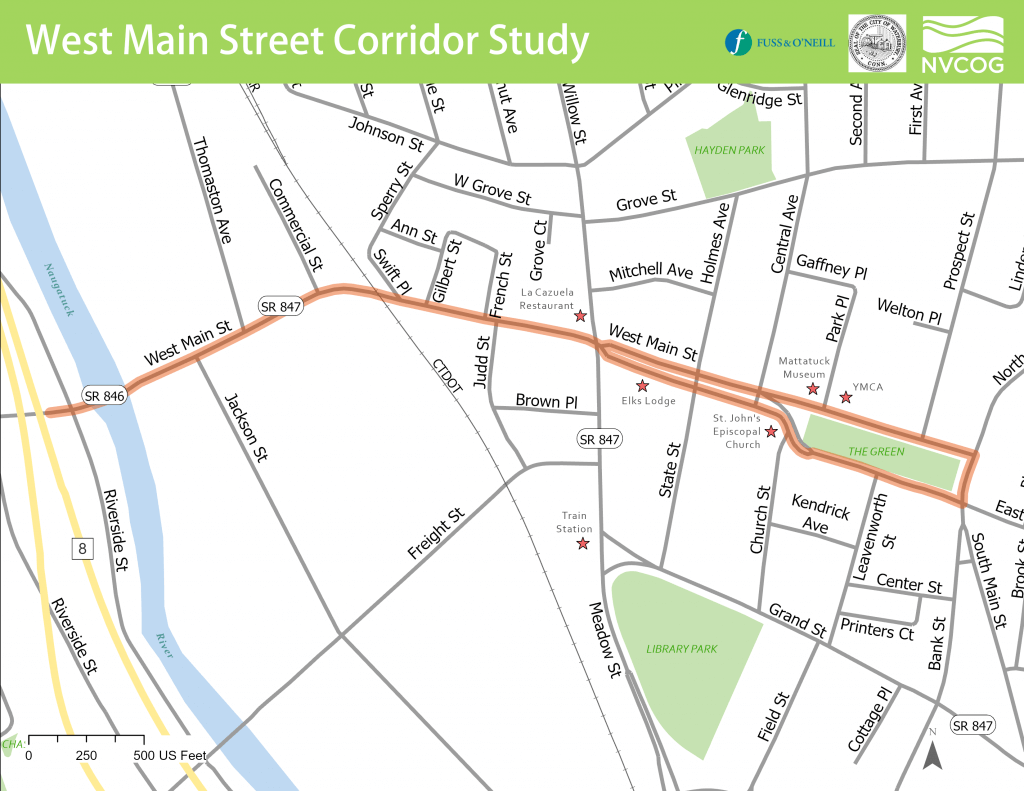
West Main Street is a short but much-used corridor that connects downtown Waterbury with parts of the city that are on the west side of the Naugatuck River. But as important as it is, West Main Street also has issues that make using it a challenge for motorists, pedestrians, cyclists and transit users. The road surface is deteriorating, and the width varies significantly between two lanes in some areas to as much as six in others. For pedestrians, crossing West Main Street can be difficult.
A complete streets approach has guided planning for upcoming work, which will include realigning intersections, narrowing parts of the road, rehabilitating existing sidewalks and building new ones, putting in bicycle lanes, and traffic calming strategies. Eyewitness News Channel 3 covered the story and interviewed NVCOG Director of Planning Josh Lecar.
Project Details
The biggest component of the project is reducing the number of travel lanes on West Main Street and making the road a uniform width. Plans call for eliminating an eastbound vehicle travel lane between Thomaston Avenue and the railroad overpass. More lane reductions are proposed in the eastbound direction east of Willow Street and Meadow Street. The number and width of vehicle travel lanes will also be reduced in the westbound direction between Willow Street and Meadow Street and Church Street.
Reducing how much street space there is for motor vehicles would free up area along both sides of West Main Street for walkers, cyclists, and other users. New mid-block pedestrian crosswalks are planned, along with other enhancements that will make the road safer for walkers like high visibility treatments, pedestrian activated signal systems, and curb extensions are planned. For cyclists, dedicated bike lanes and a protected shared-used path are part of the plan. There also will be bus lanes, more on-street parking and traffic calming measures.
Community Input
Community participation was a vital component to the study. Public meetings were held throughout the study and a public advisory committee was formed to help the planners. The PAC met for the third and final time on Sept. 28, 2021, and heard a presentation on the project from Fuss & O’Neill, the firm that helped NVCOG and the city with the study.
Staff Contact:
Rich Donovan
Transportation Planning Director
rdonovan@nvcogct.gov
Route 229 Corridor Study
The NVCOG, in collaboration with the CTDOT, Federal Highway Administration, the City of Bristol, and the Town of Southington, has engaged a multidisciplinary team to conduct a corridor study along CT Route 229 between Interstate 84 and US Route 6. The intent of the study is to plan for future development while addressing safety and traffic flow concerns, and provide for improved pedestrian, bicycle, and transit-user accessibility.
Route 229 is characterized by a variety of typologies and traverses diverse land uses. North of Route 72, King Street is a two-lane road through a residential neighborhood, providing access to the Route 6 commercial district and Bristol Eastern High School. At Broad Street, Route 229 widens to multiple lanes in both directions. The intersections of Middle Street and Route 72 and Middle Street and Pine Street/Mountain Road are of particular hazard due to high vehicle volumes, multiple lanes, and a large number of vehicles entering and exiting the roadway. This section of roadway is a hotspot for crashes. South of Pine Street, Route 229 becomes a four-lane undivided highway and remains four lanes until the Southington town line. This is a regionally significant commercial and industrial district and a significant employment center. The region’s largest employer, ESPN, is located on Middle Street, just north of the Southington town line. Additionally, the seasonal theme park, Lake Compounce, is accessed from Middle Street. The corridor’s only transit route, CTfastrak, services the Lake Avenue park-and-ride. At the Southington town border, the road narrows to one southbound lane and is the site of recurring congestion. The road remains as such until roughly 1500 feet north of I-84 Interchange 31. Land use throughout the West Street portion of the corridor is a mix of commercial and residential with several substantial business parks located in the close vicinity on intersecting streets.
As part of the study, we will collect and analyze traffic and safety data, work with the public to identify weaknesses and opportunities along the corridor, propose countermeasures to improve safety and traffic flow, produce a final report summarizing the analysis and recommendations, and provide conceptual engineering drawings for spot improvements along the length of the corridor needed to create a safer environment for all users, better traffic flow and support ongoing economic development.
The study was conducted by a team of planning experts and key stakeholders, led by BL Companies, a multi-discipline firm with extensive expertise in planning and traffic engineering. Additional expertise in real estate market trends and land use demand is being provided by The Williams Group.
Staff Contact:
Rich Donovan
Transportation Planner
rdonovan@nvcogct.gov,
Thank you to all who participated throughout the course of this study. Your input was invaluable in ensuring that our proposed concepts meet the needs of the community. Opportunities for future engagement will be possible as projects move forward in the design and implementation process.
Public Involvement Process
We strive to create a public involvement process that is collaborative, accessible and inclusive. During the course of the study, our team used a variety of tools to engage the public in a discussion and dialogue regarding the future of Route 229 and how future improvements can better integrate all users.
We conducted interviews with stakeholders, prepared an online survey, developed an interactive map, held 3 public information meetings, and maintained this web page as well as provided updates via the NVCOG’s social media platforms.
Stakeholder Interviews
Several in depth interviews with key project stakeholders were held with the goal of better understanding the issues and opportunities along Route 229 and feedback was incorporated into the final recommendations.
Public Meetings
Three public meetings were held with the dual purpose of sharing our findings and hearing directly from the community about their concerns and ideas for Route 229. These meetings were open to all, and recordings of all three are available linked below and on the NVCOG YouTube Page. The first meeting was held using a virtual workshop format. Meeting #2 was able to be held as a hybrid, offering an online and in-person option at the Bristol Public Library. Meeting #3 was also held with both a virtual option and an in-person option at the Bristol Public Library.
Social Media
In addition to this website, we will keep you up-to-date regarding the project’s status and progress on NVCOG’s social media platforms, which include Facebook, Twitter, and LinkedIn. Follow us there!
Below is a map showing the three segments of this corridor as it travels between US Route 6 in Bristol and Interstate 84 in Southington.
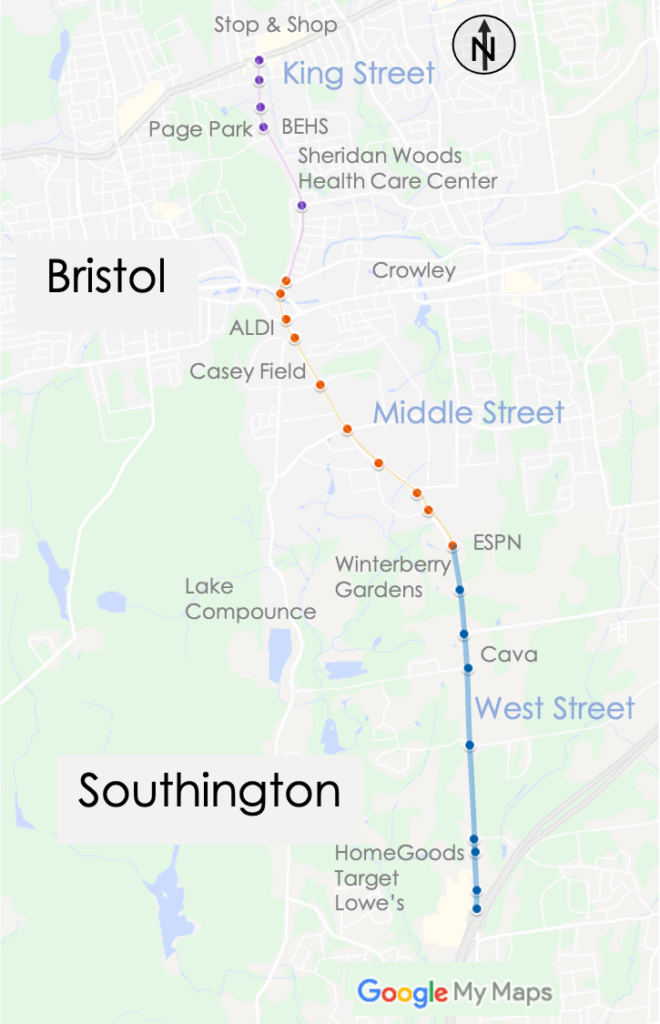
Thank you to all who participated in our corridor survey. Results of the survey are included in the final report as an appendix.
Project Timeline

The study is now complete and a final report is available for review. As the project moves forward into design and construction additional opportunities for review and comments will be available. Thank you to all who contributed comments and time to make this study valuable for our communities.
Final Public Meeting: May 26, 2022
The final public engagement meeting occurred on Thursday, May 26th, with both a virtual option and an in person meeting at the Bristol Public Library. The study team started by presenting recommendations for improvements along the corridor, followed by an opportunity for public comment on those changes. The meeting recording is available on the NVCOG YouTube page and is linked below. Comments will be accepted in writing to contactus@nvcogct.gov through June 27, 2022, and will be incorporated in the final report.
Second Public Meeting: September 29, 2021
A second public engagement session was held on Wednesday, September 29. It began with a guided tour of the corridor, including stops in both Bristol and Southington. More details of the locations visited are in the flyer below. This was followed by a public meeting at the Bristol Library. For those who were unable to attend the meeting there is a recording available on the NVCOG YouTube page that is linked below. Slides from this meeting have also been posted.
See a recording of the meeting here: https://www.youtube.com/watch?v=77q3zOrCYm8
Slides for this meeting can be found here
First Public Meeting: April 14, 2021
The Route 229 project team held a virtual public meeting on April 14 between 5 – 7 pm. The goals and objectives of the Route 229 Corridor study were discussed and stakeholders had the opportunity to ask questions and offer public input on this project.
See a Recording of the meeting here: https://youtu.be/2f0RTZFTNQo
Slides for this meeting are available here
Oxford Route 67 Alternative Transportation Study
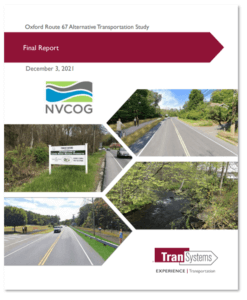
The Town of Oxford has been awarded a $3.4 million Congressionally Directed Spending grant that will pay for building a mile-long multi-use path on Route 67 that is integral to making the center of Oxford more walkable and bicycle-friendly.
Oxford was awarded the grant in December, and the project is in the design phase. The path will run from Dutton Road to Quarry Walk, a mixed-use development with stores, medical and commercial office space and 150 residential units. Plans include three pedestrian bridges to carry the path over water courses, a sidewalk between Oxford Municipal Center/ Town Hall and Academy Road along with lighting, street furniture and crosswalks.
Building a multi-use path for cyclists and walkers along Route 67 is a key component of the Oxford Route 67 Alternative Transportation Study that the town did with NVCOG and the Connecticut Department of Transportation (CTDOT). The Oxford Board of Selection endorsed the final report in February 2022.
The study investigated the potential for bicycle, pedestrian, and transit improvements along Route 67 in Oxford. The study was funded by NVCOG with federal transportation planning funds and was conducted with support by TranSystems, a planning and engineering consultant with offices in Meriden, CT. It was overseen by the Oxford Main Street Committee that was formed in 2017.
A short section of that path opened in 2021 and runs from the Little River Nature Preserve (across from Oxford Town Hall) to Dutton Road.
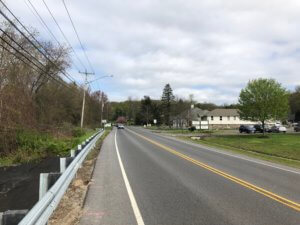
Existing Conditions along Route 67. Note the lack of pedestrian and bicycle accommodations.
Unlike many of its neighbors, Oxford does not have a typical walkable New England downtown or Main Street. Instead, municipal services and commercial areas are dispersed along with residences along State Route 67. Although Route 67 is fundamentally Oxford’s “Main Street,” it had no sidewalks or any safe bicycle or pedestrian access, and traffic speeds are excessive with no visual cues to alert motorists that they are driving through an area where they may encounter walkers or bicyclists. In addition, no public transit is operated along Route 67 that could provide residents an alternative transportation option. Transit options by train on Metro North and by bus on CT Transit are available only one mile from the Oxford town line, but there is currently no way for Oxford residents to safely access these services without a personal motor vehicle.
In Oxford’s 2018 Plan of Conservation and Development, the town prioritized creating more of a downtown feel along Route 67, and the Oxford Main Street Committee has been investigating streetscape improvements, sidewalks and trails within the corridor to improve non-motorized access. The study built on the committee’s prior work to develop a cohesive plan for the entire corridor to better enable the Town to plan, prioritize, and fund future improvements.
Explore Study Findings
The interactive Project Storymap presents the study and potential bicycle and pedestrian improvements to Route 67
Explore the Project Area
The interactive Project Webmap allows users to explore the project corridor in greater detail by turning on and off various data layers that are informing the study:

